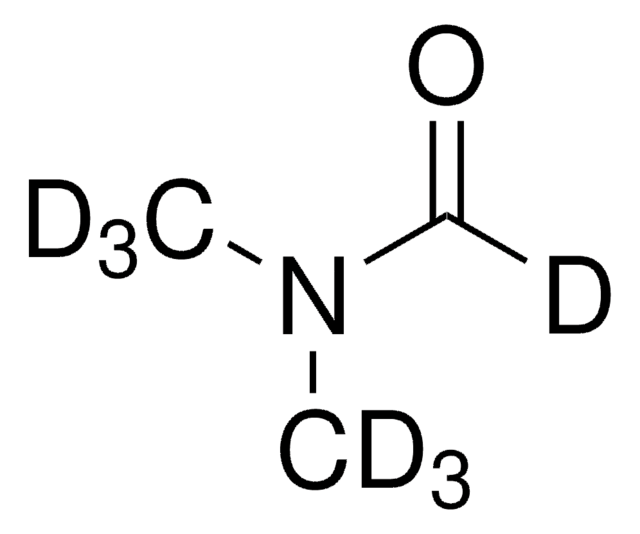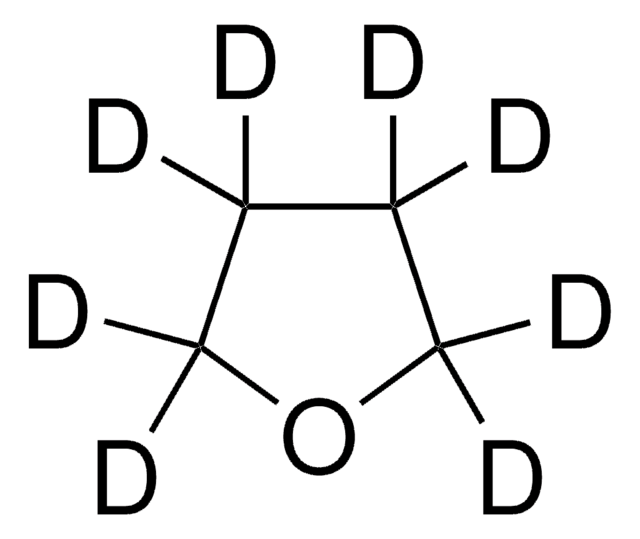Wichtige Dokumente
717908
Chloroform -Lösung
NMR reference standard, 50% in acetone-d6 (99.9 atom % D), chromium(III) acetylacetonate 0.2 %
About This Item
Empfohlene Produkte
Qualität
NMR reference standard
Form
solution
Zusammensetzung
chromium(III) acetylacetonate, 0.2%
Konzentration
50% in acetone-d6 (99.9 atom % D)
Methode(n)
NMR: suitable
NMR-Röhrchengröße
5 mm × 7 in.
5 mm × 8 in.
Eignung
suitable for NMR (reference standard)
SMILES String
ClC(Cl)Cl
InChI
1S/CHCl3/c2-1(3)4/h1H
InChIKey
HEDRZPFGACZZDS-UHFFFAOYSA-N
Suchen Sie nach ähnlichen Produkten? Aufrufen Leitfaden zum Produktvergleich
Leistungsmerkmale und Vorteile
Menge
Signalwort
Danger
Gefahreneinstufungen
Acute Tox. 3 Inhalation - Acute Tox. 4 Oral - Carc. 2 - Eye Irrit. 2 - Flam. Liq. 2 - Repr. 2 - Skin Irrit. 2 - STOT RE 1 Oral - STOT SE 3
Zielorgane
Central nervous system, Liver,Kidney
Lagerklassenschlüssel
3 - Flammable liquids
WGK
WGK 3
Flammpunkt (°F)
-2.2 °F
Flammpunkt (°C)
-19 °C
Zulassungslistungen
Zulassungslistungen werden hauptsächlich für chemische Produkte erstellt. Für nicht-chemische Produkte können hier nur begrenzte Angaben gemacht werden. Kein Eintrag bedeutet, dass keine der Komponenten gelistet ist. Es liegt in der Verantwortung des Benutzers, die sichere und legale Verwendung des Produkts zu gewährleisten.
EU REACH Annex XVII (Restriction List)
Hier finden Sie alle aktuellen Versionen:
Besitzen Sie dieses Produkt bereits?
In der Dokumentenbibliothek finden Sie die Dokumentation zu den Produkten, die Sie kürzlich erworben haben.
Unser Team von Wissenschaftlern verfügt über Erfahrung in allen Forschungsbereichen einschließlich Life Science, Materialwissenschaften, chemischer Synthese, Chromatographie, Analytik und vielen mehr..
Setzen Sie sich mit dem technischen Dienst in Verbindung.






